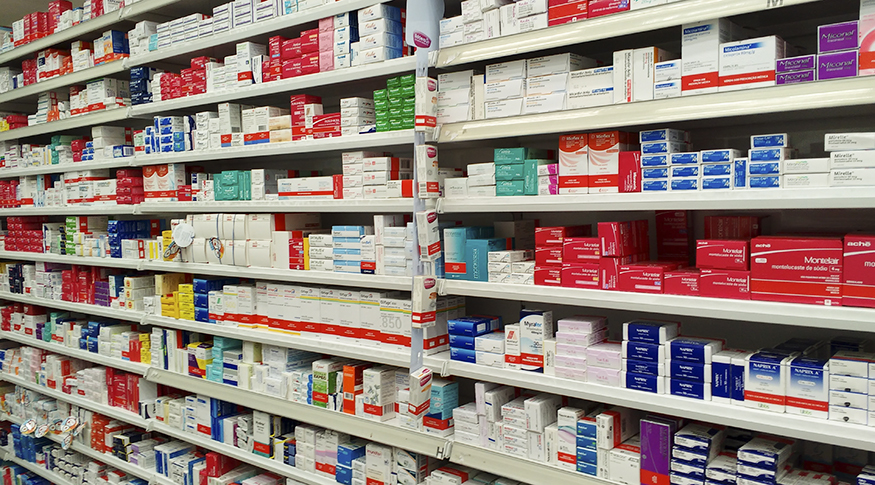Monthly Survey of Trade
Retail up again after increase of 0.8% in sales in January
March 10, 2022 09h00 AM | Last Updated: March 11, 2022 12h27 AM

Volume of sales of retail trade in the coiuntry increased by 0.8% in January against the previous month. Despite this increase, more than half of the activities recorded a negative result in the period. In the last 12 months, retail trade had a cumulative increase of 1.3%. The sector is 1;0% below the pre-pandemic level (February 2020_ and 6.5% below the series peak (October 2020). These results are from the Monthly Survey of Trade, released today (10) by the IBGE.
“Trade has not increased since July 2021 (3.6%), as the rate of November 2021 (0.4%) is stable. For te months of January, it is the highest since 2019, when the result reached 1.6%,” says the manager of the survey, Cristiano Santos.
Five of the eight activities surveyed also recorded negative rates in November. In spite of that there was increase due to the activities of Pharmaceuticals, medical and orthopedic articles and toiletries and Other personal and household articles (9.4%). “The activity hyper and supermarkets, of great relevance, remained stable (-0.1%), and that caused other activities to have a higher influence on the index,” Mr. Santos said.
In the case of extended retail trade, the decrease of 0.3% results, mainly, from the activity Vehicles and motorcycles, parts and pieces, which fell by 1.9%.
Retail trade fell by 1.9% from January 2021
In the interannual comparison, retail trade fell by 1.9%, with negative results in five of the eight activities surveyed.
“In terms of negative results, the main contributions to the index in January 2022 were those from Furniture and household appliances, with -1.1 p.p of contribution, and Other personal and household articles, with -0.9p.p. In terms of positive results, the highlight was Pharmaceuticals, medical and orthopedic articles, and toiletries, which accounted for 1.1 p.p,” Mr. Santos explains.
Furniture and household appliances, with a decrease of 11.4% from January 2021, recorded its eight consecutive decrease in this comparison. Other personal and household objects, sector which encompasses department stores, glasses’ shops, jewelry shops, sporting goods stores, toy stores, etc, totaled -6.0% from January 2021, biggest decrease since October 2021 (-7.2%) and sixth decrease in a row.
Pharmaceuticals, medical and orthopedic articles, and toiletries recorded an increase of 10.1% in the comparison between the month and the same month a year ago, third increase in a row and the biggest in the last three months (against 2.5% in November and 7.7% in December).
Regarding extended retail trade, the decrease of 1.5% was driven by the activity of Construction material, which recorded -7.8%, seventh decrease in a row. “That is the result of a low basis for comparison. The sector increased significantly in the beginning of the pandemic, with positive results from June 2020 (22.6%) up to June 2021 (5.4%), with the start of a downward trend,” Cristiano Santos explains.
Retail is 1.0% below pre-pandemic level
Mr. Santos highlights that the result of January is 0.8% below the data in February 2020, before the pandemic. Against the peak of the series, which was 2020 in October, the sector is 6.5% below.
Among the activities which are above pre-pandemic level, stand out: Pharmaceuticals, medical and orthopedic articles, toiletries and cosmetics (23.7%), Construction material (9.8%) and Other personal and domestic articles (5.4%).
The activites of Books, newspapers, magazines and stationery (-35.5%), Office, computer and communication material and equipment (-14.1%) and Fuels and lubricants (12.9%) are still signficantly below pre-pandemic levels.
Trade sales increase in 15 of the 27 Federation Units
Against December, the volume of retail trade sales was positive in 15 of the 27 Federation Units, with a highlight to: Rio de Janeiro. (3.0%), Alagoas (2.8%) and Pernambuco (25%). On the other hand, with negative contributions, Amapá (-3.7%), Rio Grande do Norte (-1.8%) and Amazonas (-1.7%). Minas Gerais, in this comparison, recorded null change (0.0%).
Against January 2021, the predominance was of negative rates (16 of the total of 27), with a highlight to: Amapá (-10.8%), Sergipe (-8.9%) and Federal District (-7.8%). The other 11 Federation Units recorded positive results in the interannual comparison, with a highlight to: Amazonas (35.3%), Roraima (7.5%) and Espírito Santo (7.2%). Mr. Santos highlights that the increase in Amazonas was due to the low basis for comparison, once the state went through a period of lockdown in January 2021.
More about the survey
The Monthly Survey of Trade (PMC) produces indicators to monitor the short-term behavior of retail trade in Brazil, investigating the gross revenue in formal enterprises with 20 or more employed persons and whose major activity is retail trade.
Having started in 1995, the PMC brings monthly results of changes in sales volume and nominal revenue for retail trade and extended retail trade (cars and construction material) for Brazil and Federation Units. The data collection technique includes the pre-filled electronic questionnaire (CASI) and personal interview with paper questionnaire (PAPI). The results are available at Sidra.




















